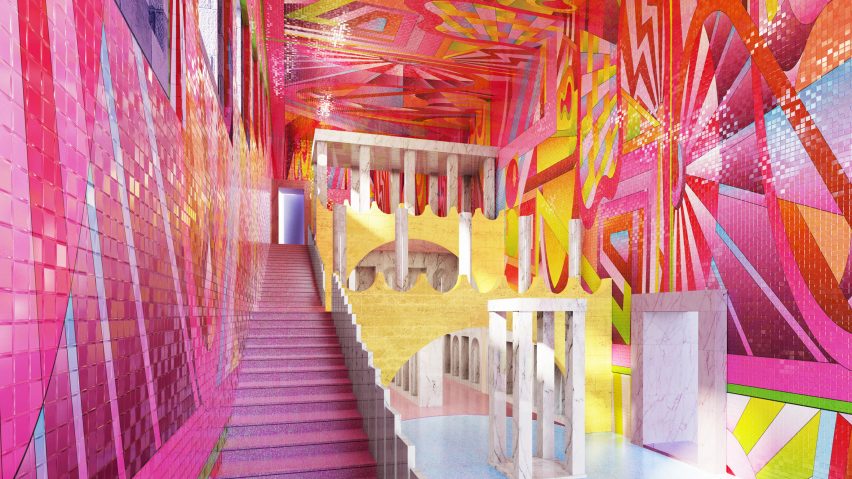
Colourful "New London Fabulous" design movement is challenging minimalism, says Adam Nathaniel Furman
Design education "brainwashes" students into rejecting colour, pattern and ornament, according to Adam Nathaniel Furman, who said a group of London designers is finally overcoming bias against their use.
Furman named the movement "New London Fabulous" and described it as "design and architecture as a visual and cultural pursuit, which is highly aesthetic, sensual and celebratory of mixed cultures".
Furman cited London designers Yinka Ilori, Camille Walala and Morag Mysercough as other key figures in the movement, which he said was overturning entrenched bias in the design establishment.
Education "brainwashes" designers
"In terms of what gets canonised, there's definitely a confirmation bias but there's also a naturalisation which brainwashes people through design education," he said, adding: "This is not a critique of design education as a whole because it's fantastic."
"I am part of a sort of group of London designers who have come up who are about my age, over the past few years, and we all seem to have very similar interests," said Furman, speaking to Dezeen last week in a live interview as part of Virtual Design Festival.
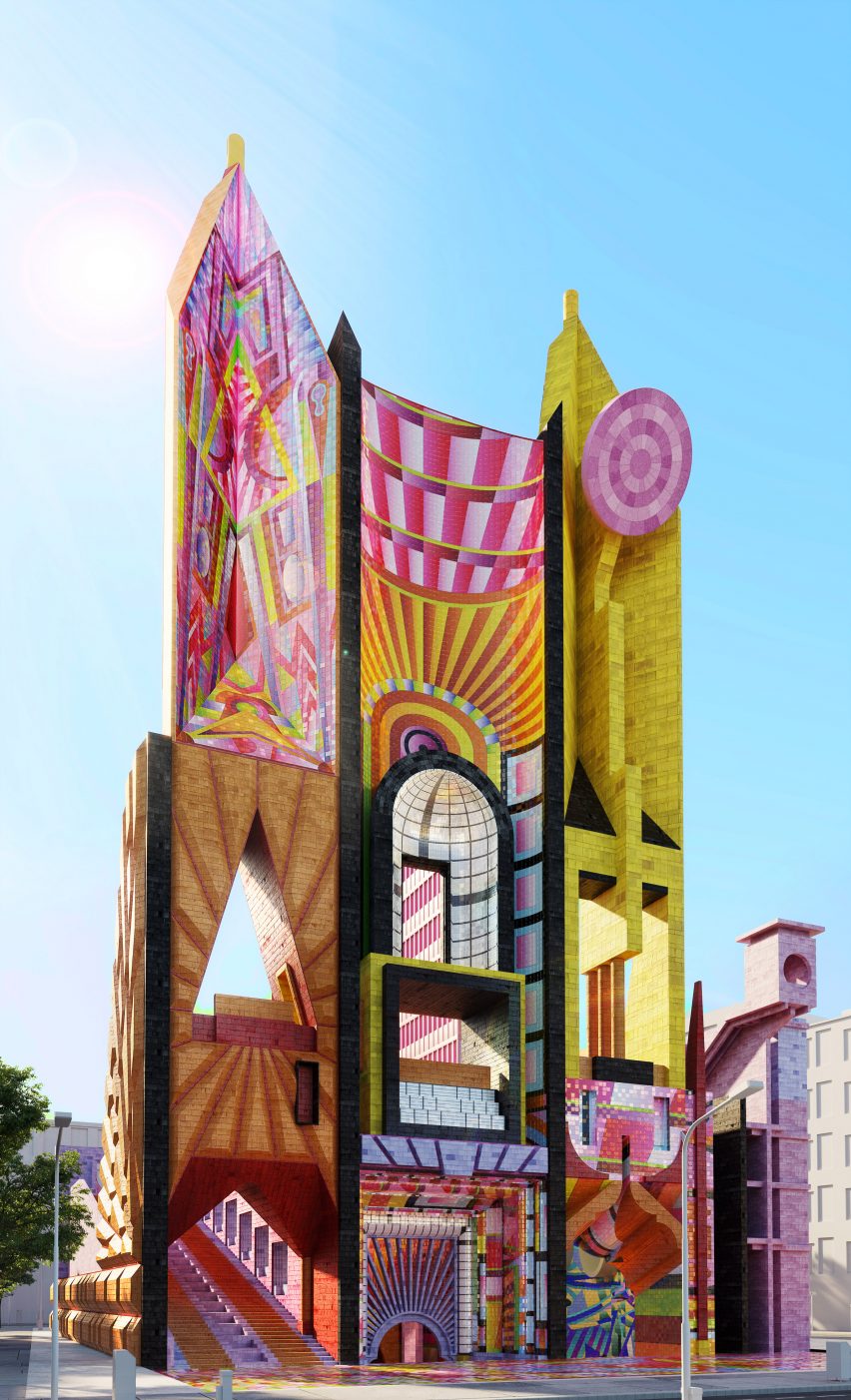
"I think people have sort of dismissed us as being like a postmodern revival," he said. "But actually we're really passionate about a lot of things that were just ignored for a while."
All four designers use bold colour and pattern in their work. Designer Yinka Ilori's furniture, interiors and architecture collaborations feature decorative colour schemes.
"New London Fabulous" movement
Initially a textile designer, Camille Walala is known for her colourful graphics, which she applies to interiors, architecture and urban projects.
Trained as a graphic designer, Morag Myerscough's work is similarly characterised by lively use of colour, pattern and typography.
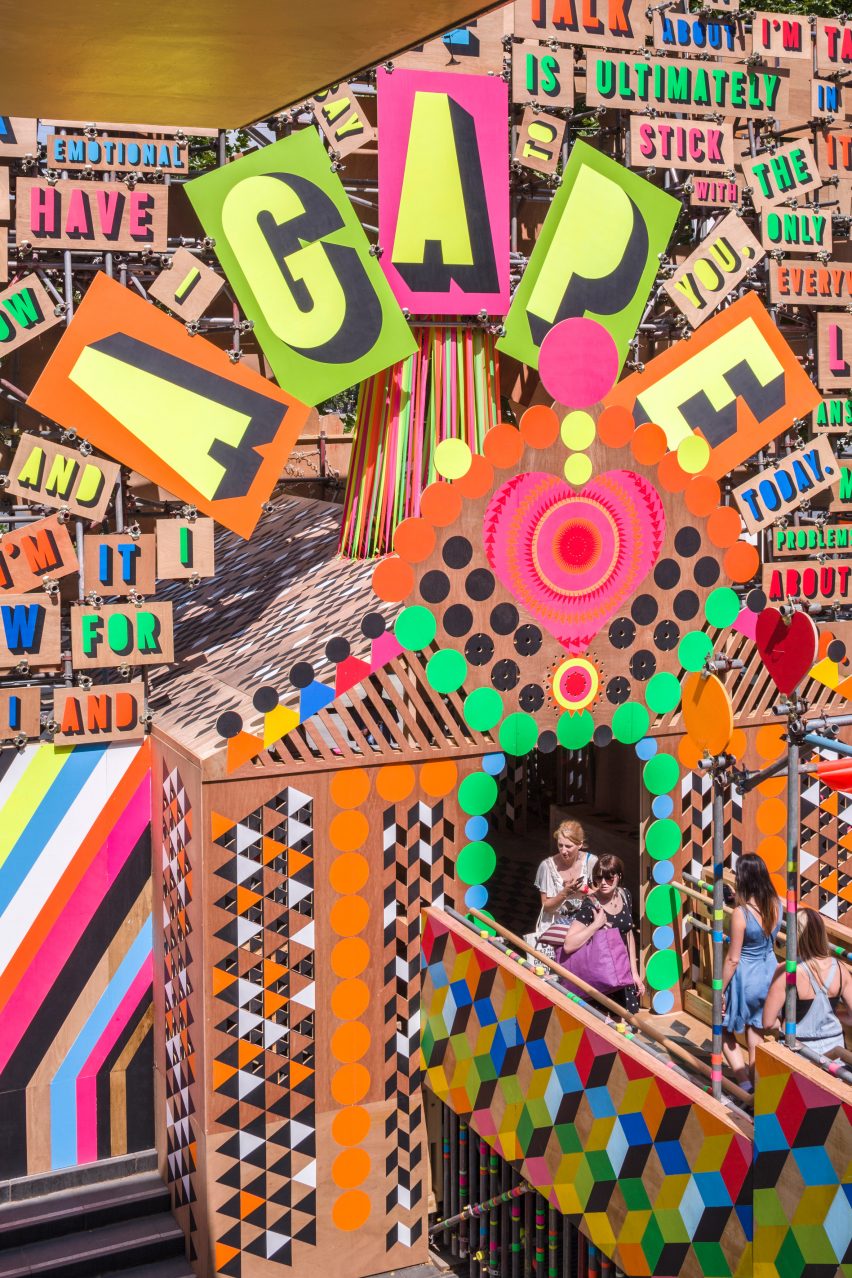
"My hero is Morag Myerscough, who's been incredibly supportive," said Furman, whose own work features lavish use of colour, pattern and historical references.
"She shares her knowledge with younger designers and has really opened up the way for the type of work that we're doing now."
Furman said the four approached architecture and design "as a visual and cultural pursuit, which is highly aesthetic, sensual and celebratory of mixed cultures."
Their work "picks and chooses and mixes from different periods and it does look back," he said.
Colour "not considered serious"
Furman said that the use of colour has been airbrushed from the design canon, even though its use never went away. "I think maybe those who are celebrated and canonised, don't use it," he speculated.
The Bauhaus, for instance, is often viewed as the originator of much of today's pared-back design, yet it was "so colourful," Furman said. "Kandinsky was teaching there," he added.
"Throughout history, there's plenty of mostly women and queer designers who've always used a lot of colour," Furman explained, adding that "a lot of the most popular interior designers have absolutely nothing to do with all of the minimalist architects."
"But they're just not canonised. It's considered not serious. There's an inculcation into a sort of club of looks."
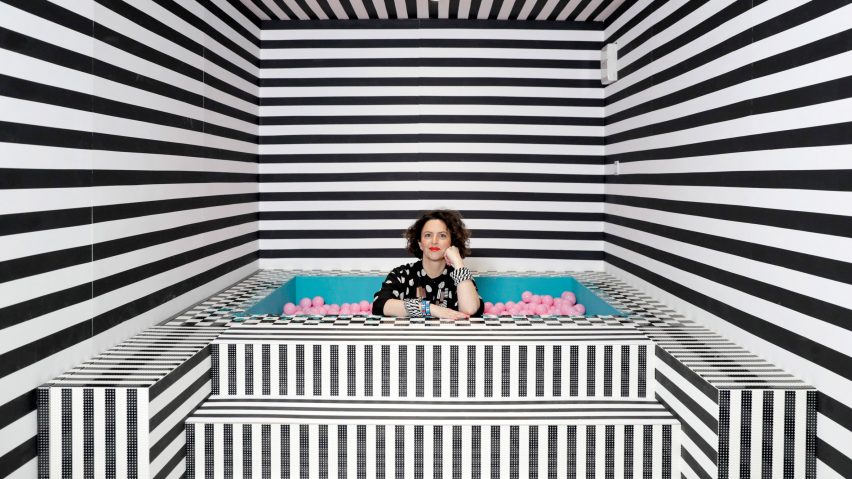
Things are changing, Furman believes, saying there are "a lot of young, queer practitioners and students coming into the industry. The makeup of the design profession is radically transforming. The new generation that is starting to come up now is going to be so cool. It's a very, very beautiful and interesting period for British architecture."
Although not a qualified architect, Furman studied at the Architectural Association school in London, completing his studies in 2008. However, he rejected the technology-driven aesthetic adopted by others at the school, instead viewing technology as an enabler rather than something to celebrate in its own right.
Studied at Architectural Association
"I went through the AA when it was a sort of technophilic Patrik Schumacher period where everyone was sort of believing that technology had to drive everything and everything that you did needed to look as if it was made by technology," he said, adding that much of the work coming out of the school at the time resembled "alien squid or bones".

Furman now co-runs the AA's Saturated Space research cluster, a forum for "the sharing, exploration, and celebration of colour in architecture".
Furman got his first break in 2013 when he was selected for the Designers in Residence programme at the Design Museum, creating a range of ornamental ceramic and 3D-printed objects.
In 2017 he was commissioned by Scottish programme Architecture Fringe to create a speculative design for a high-rise town hall. Called Democratic Monument, it features polychromatic twin towers and a monumental staircase for public events.
Proposal for polychromatic town hall
"It regroups various civic functions into one visually symbolic composition of architectural forms that reconfigure and express varying references, ornament and allusions, depending on the metropolitan area it is situated in and embodies," he wrote in a manifesto for the project on his website.
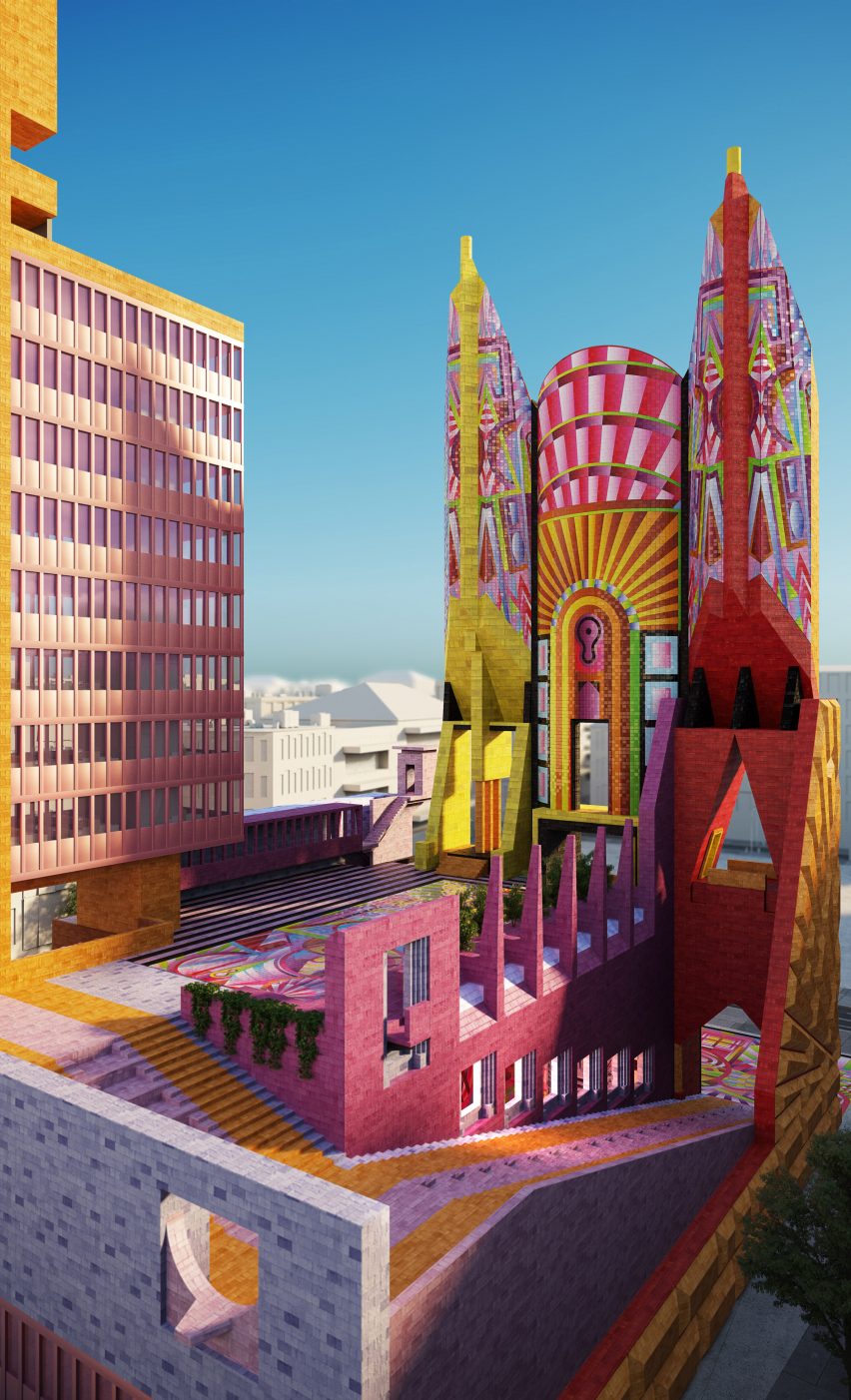
"It is an expression of urban pride, chromatic joy, and architectural complexity."
In 2018 he co-authored Revisiting Postmodernism, a reappraisal of the maligned movement co-written with Terry Farrell.
His 2019 furniture collection for Milan's Camp Design Gallery features kaleidoscopic printed laminates and cartoonish forms reminiscent of the influential Memphis design group. He described the pieces as an "international cross-fertilization of ornamental styles and quite a lot of campiness."
"I'm one of those people that will take any scale," he said. "My dream is to do a whole skyscraper but I don't think I'll ever be allowed to do that."